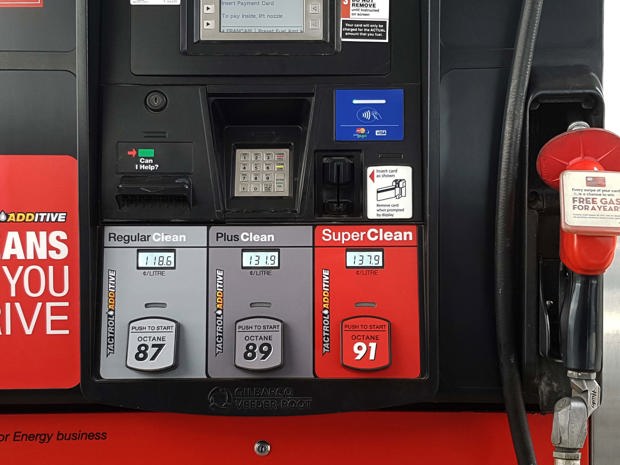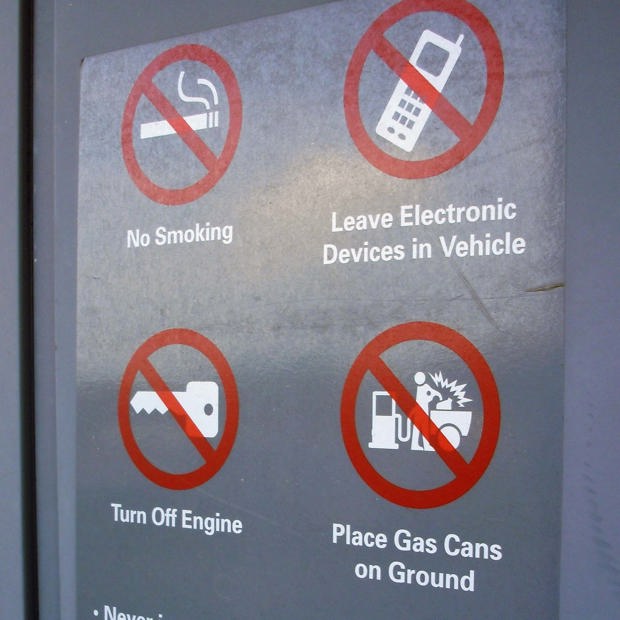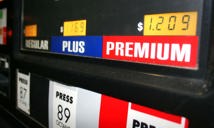Unless you drive an electric vehicle, regular visits to the gas station are a fact of life if you own or drive a car for work or play. Here’s a closer look at some of the goings-on around you when you visit the fuel station, a few ways to add value and convenience to your refueling experience, and a closer look at the fuel you put in your ride.
Fuel Station Basics

Fuel Grades
Most fuel stations sell at least three grades of gasoline, arranged by their octane rating, which is identified by an increasing number on the pump. Typically, a fuel station offers 87 octane gasoline as its regular grade, 91 octane as its mid-grade, and 91 octane as its top-grade fuel. Some stations also offer a 93.
Different engines in different vehicles work best on certain octane grades, with common, mainstream commuter car and crossover models, as well as pickups, typically running 87 octane. Higher-performing machines, like sports cars and performance or luxury models, often require a higher octane fuel for maximum performance and efficiency.
The octane rating your vehicle requires is listed on its fuel door, or in the owner’s manual. Note that in the vast majority of cases, there’s no benefit to fueling up with a higher octane level than your vehicle requires.

Top Tier Fuels
The Top Tier designation is given to fuels that meet a high standard of performance and quality, and that include special additives that go above and beyond standard requirements to combat deposit buildup within engines over time. With a Top Tier fuel, an independent laboratory validates the additive package applied to the fuel, to confirm that the fuel meets the high standards required for the Top Tier rating. Many newer vehicles, and especially those with direct injection engines, require Top Tier-rated fuels at every fill.
Using a Top Tier fuel enhances engine cleanliness, performance and durability, and Top Tier fuels are available across all octane levels. Put another way, high-octane fuel isn’t necessarily Top Tier fuel, and Top Tier fuel is available in low-, mid- and high-octane levels.
Shoppers interested in fueling with Top Tier fuels can check the Top Tier gasoline website, for a list of Top Tier-certified brands. Many major Canadian gasoline retailers are Top Tier-rated.

Ultra-High-Octane Fuels/Flagship Fuels
Many fuel stations, and especially those in large cities, offer ultra-high-octane fuels or flagship fuels, or both. For instance, some fuel suppliers offer an extra-high grade of gasoline, with 93 or higher octane. High-octane fuels like these are intended primarily for use in exotic performance cars, like the Nissan GT-R, Lamborghini Aventador, and Porsche 911 Turbo. Many owners of custom-tuned performance cars with modified engines prefer to run ultra-high-octane fuel as well.
Further, some retailers offer a signature or flagship fuel, like Shell V-Power Nitro + or Esso Synergy, which contain special additives and formulations that increase performance, improve fuel efficiency, offer improved engine cleaning, and more. Some gasoline retailers offer their flagship fuel designation in both gasoline and diesel fuels.

The Yellow Pumps
At the fuel station, pumps with yellow handles are typically reserved for diesel fuel, which is commonly used in larger trucks and certain car models. Diesel fuel can damage a gasoline-powered car, so many diesel pumps, and many gasoline-powered cars, are fitted with safety features to prevent accidental mis-fueling. If you manage to fill your gas-powered car with diesel at the fuel station (or vice versa), stop fueling immediately, call a tow truck, and have the vehicle towed to your favourite mechanic. Do not start the engine.

Other Fuels
Some fuel stations have pumps and tanks used to refuel vehicles that run on alternative fuel sources, like natural gas or propane. Most mainstream vehicles don’t run on these fuels, but many vehicle fleets, including taxi cabs companies, transit companies, and the like, run vehicles that have been converted to run on them, often for lower fuel costs that make better business sense when running a fleet.
Gas Station Perks: Added Convenience, Get More, Pay Less

PayWave / Tap / Pay at the Pump
Fuel stations offer shoppers a quick way to pay for their fuel, without having to walk into the storefront and stand in line. Many fuel pumps accept credit cards, meaning shoppers can pre-authorize their purchase right at the pump, complete the transaction, and obtain a receipt, all without going into the store. Some fuel pumps are tap-to-pay equipped, meaning that shoppers can merely tap their credit or debit card, or even their properly equipped Smartphone, against a touchpad, to pay for their purchase. This adds convenience and speeds up the refueling process.

Points Program
Virtually all fuel retailers offer some points or reward program designed to inspire customer loyalty. In some cases, a separate points card is swiped or scanned at the sales terminal at each purchase, with fuel, snack and lottery purchases all adding to the shopper’s points balance. Later, points can be redeemed for free fuel, gift cards, car washes, and more. Some fuel retailers even offer their own credit card, allowing shoppers to gather even more points with every purchase. If you don’t have a points card for your favorite fuel station, consider getting one for added value and free perks. Here’s some more information about gas station points programs.

Find the Best Price
Every penny counts – and with slightly different prices common across fuel stations, even in close proximity to one another, many shoppers actively seek out the lowest fuel price when refueling their ride. Handy smartphone apps, like GasBuddy, make it easy: when it’s time to refuel, just check with the app for the lowest nearby fuel prices, and select the best station accordingly.
Fuel Station Safety:

General Safety Tips
Fuel is explosive, flammable, and can emit vapors that are harmful to breathe. As such, fuel stations go to great lengths to protect customers from harm. Still, some basic safety rules need to be followed. For instance, always stay with your vehicle when fueling it, and never jam an object into the gun handle to force it into the on position, which can cause a dangerous spill. Most fuel stations use guns that require the customer’s hand to remain on the lever at all times, meaning that the customer will always be within arm’s reach of the pump, the emergency call button, or the kill switch. Further, avoid static electricity by touching something metal (like your car) when you exit, but before fueling. And, of course, don’t smoke while refueling your ride, unless you like skin grafts.

